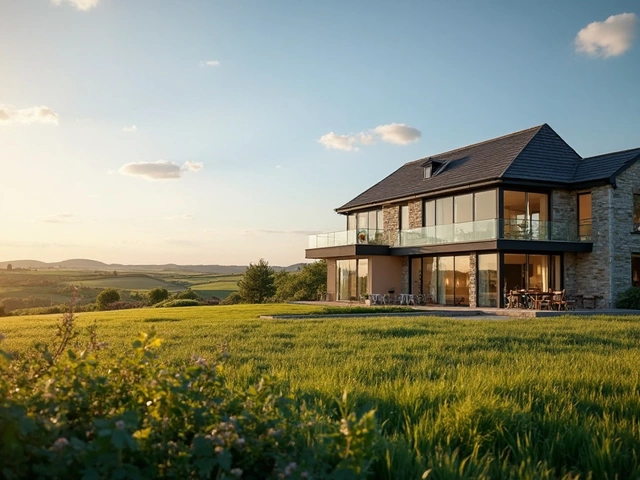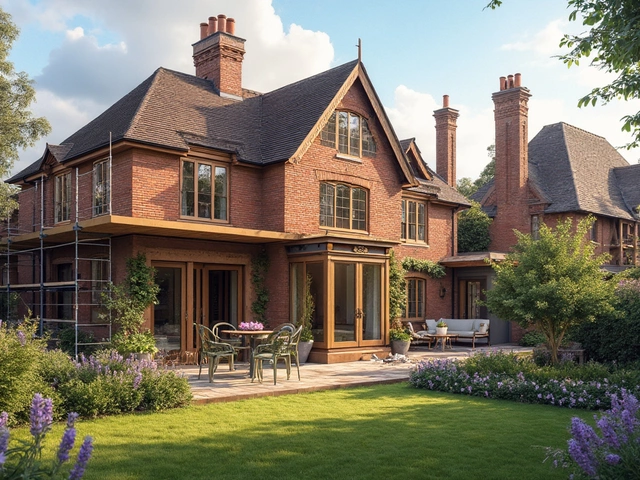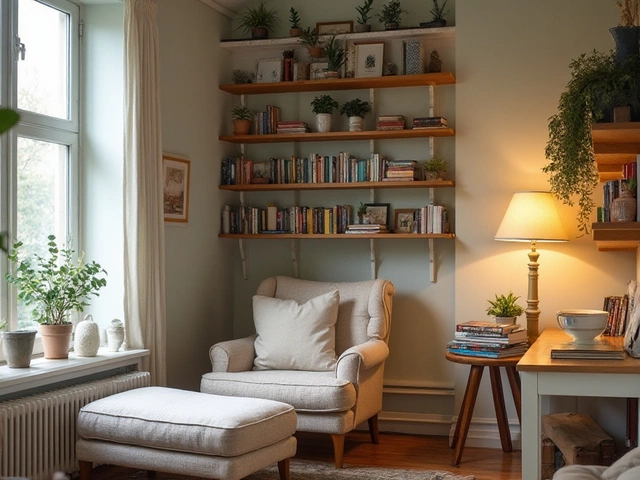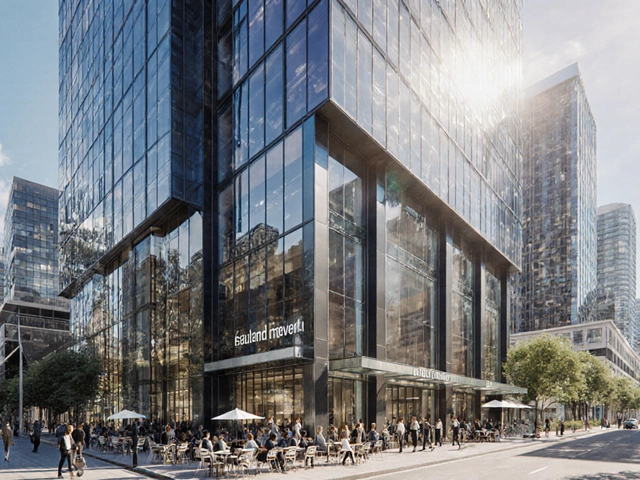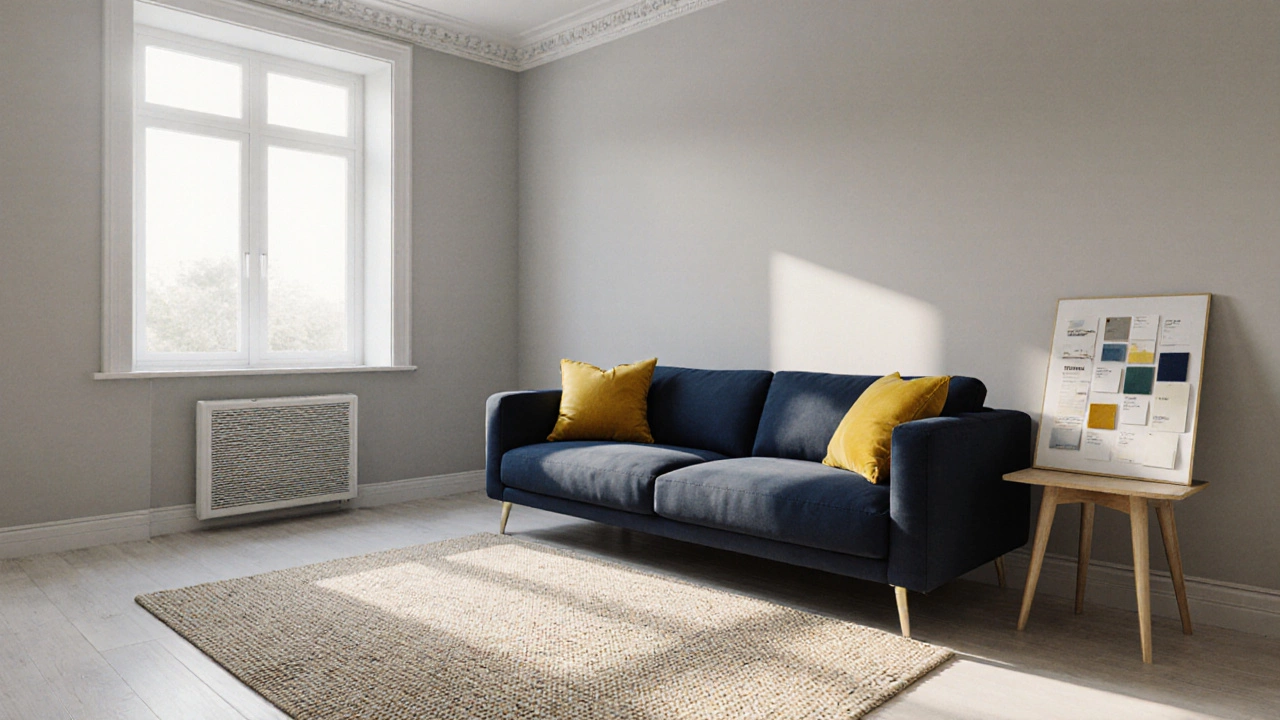
Living Room Rug Size Calculator
How to Use This Calculator
Input your room dimensions and seating arrangement to get ideal rug recommendations based on professional design principles. The calculator follows the 60-30-10 rule and maintains 3-foot walking paths.
Recommended Rug Size
Length:
Width:
Key Takeaways
- Start with a clear color palette before buying anything.
- Arrange furniture for flow, not just symmetry.
- Layer lighting to set mood and highlight focal points.
- Use one or two accent walls to add personality without overwhelming the space.
- Finish with accessories that reflect your style while keeping scale in mind.
Ever walked into a showroom and thought, “I could pull that off at home”? The good news is you can, and you don’t need a huge budget or a design degree. Below is a step‑by‑step playbook that shows how to turn any living room into a space that feels curated by a pro.
Living room decor is a the practice of styling the central gathering area of a home to balance function, aesthetics, and personal taste. When you approach it like a professional, you focus on three pillars: color, layout, and lighting. Master those, and the rest falls into place.
1. Nail the Color Palette First
All great Color palette a deliberate selection of primary, secondary, and accent hues that guide the overall mood of a room starts with a single base shade. Pick a neutral-think cool greys, warm taupes, or soft off‑whites-then add 1‑2 accent colors drawn from artwork, textiles, or a favorite piece of furniture.
Pro tip: Use the 60‑30‑10 rule. Allocate 60% of the space to the neutral, 30% to a secondary tone, and 10% to a bold accent. This ratio keeps the room grounded while still feeling lively.
2. Map Out a Functional Furniture Layout
Next comes Furniture layout the strategic arrangement of sofas, chairs, tables, and storage pieces to promote traffic flow and conversation. Forget the textbook “center the sofa” rule; professionals start with the room’s natural traffic patterns.
Steps to follow:
- Identify the focal point-fireplace, TV, or a large piece of art.
- Place the largest seating item (usually a sofa) facing that focal point.
- Add secondary seating at 45‑degree angles to encourage dialogue.
- Keep walking paths at least 3feet wide.
- Use coffee tables and side tables only if they support the seating islands.
When space is tight, consider a floating layout: pull the sofa away from the wall and flank it with a pair of chairs. This creates a more intimate conversation zone and makes the room feel larger.
3. Layer Lighting Like a Pro
Professional Lighting design the combination of ambient, task, and accent lighting to shape mood and functionality uses three layers:
- Ambient - ceiling fixtures or recessed lights that provide overall illumination.
- Task - floor lamps or table lamps for reading, gaming, or work.
- Accent - LED strips, picture lights, or spotlights that highlight artwork or architectural details.
Start with a dimmable overhead fixture. Then add a pair of floor lamps on either side of the sofa for reading. Finally, place a narrow accent light-like a picture light-over your chosen focal wall.
4. Create an Accent Wall Without Overdoing It
One Accent wall a single wall treated with a different color, texture, or material to add visual interest can instantly upgrade a living room. Choose a wall that already draws the eye, such as the one behind the sofa.
Options include:
- Deep paint color or a subtle wallpaper pattern.
- Textured panels or reclaimed wood planks for a rustic vibe.
- Large art canvas that covers the whole wall for a gallery feel.
Keep the rest of the room neutral to avoid a chaotic look. If you love pattern, go for a toned‑down, large‑scale design rather than a busy repeat.
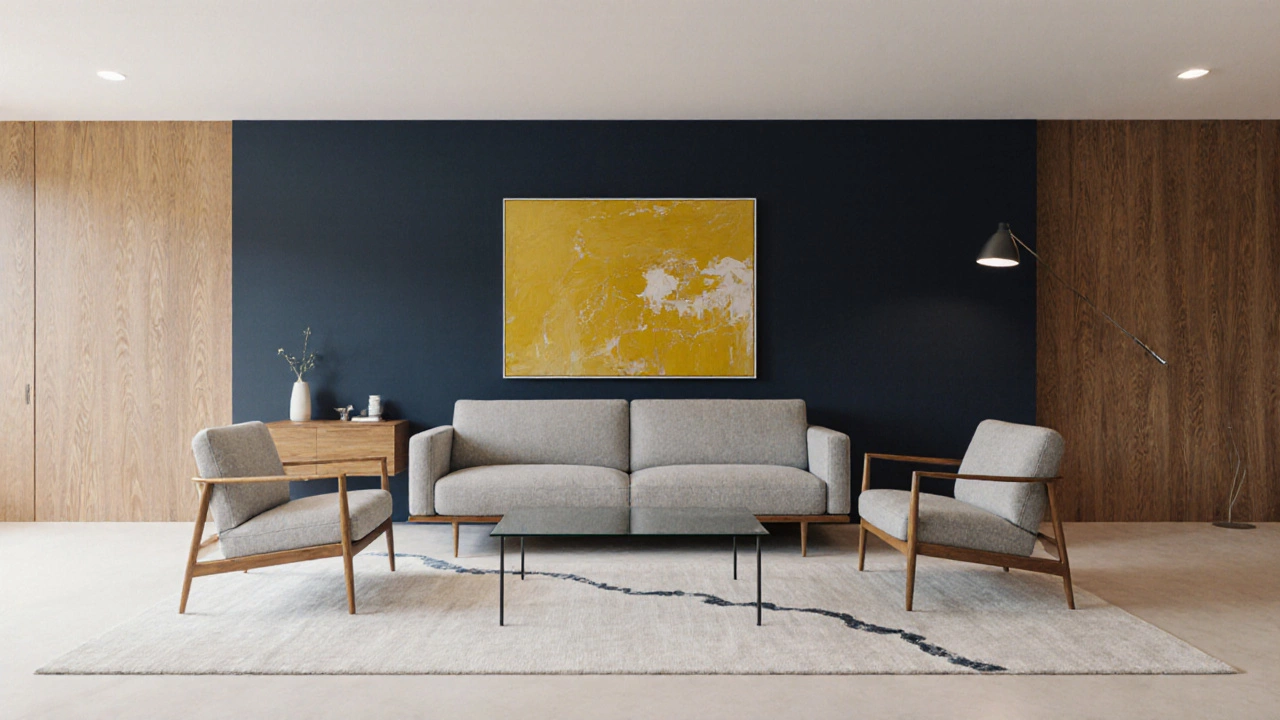
5. Anchor the Space with a Quality Area Rug
An Area rug a floor covering that defines zones, adds softness, and introduces pattern or color ties together furniture and lighting. Pick a rug that’s at least as wide as the front legs of all seating pieces. For a standard three‑seater sofa, a 6×9ft rug works well.
Materials matter: wool feels plush and lasts longer, while flat‑weave cotton is easy to clean. Choose a pattern that pulls one of the accent colors from your palette; this creates cohesion without forced matching.
6. Dress Your Windows for Both Style and Function
Window treatments curtains, blinds, or shades that control light, provide privacy, and contribute to the room’s aesthetic are often overlooked. A simple rule: hang drapes high-just above the ceiling-and let them fall to the floor. This adds height and a tailored look.
Pair light‑filtering sheers with heavier blackout curtains for versatility. Choose fabrics that echo your rug or upholstery for a unified feel.
7. Add Architectural Detail with Crown Molding
Even if your home is modern, a modest Crown molding decorative trim installed where walls meet the ceiling, adding depth and elegance can make the space feel custom‑built. Simple “soft‑edge” profiles work in both contemporary and traditional settings.
Paint the molding the same color as the walls for a seamless look, or choose a slightly contrasting shade to highlight the detail.
8. Finish with Thoughtful Decorative Accessories
The final layer is Decorative accessories small objects like cushions, vases, books, and art pieces that personalize a room. Follow the 3‑2‑1 rule: three large items (e.g., a statement mirror), two medium items (e.g., decorative bowls), and one small item (e.g., a scented candle).
Keep scale in mind-oversized accessories look cramped, while too‑tiny pieces get lost. Aim for a balanced distribution across the room so the eye moves naturally.
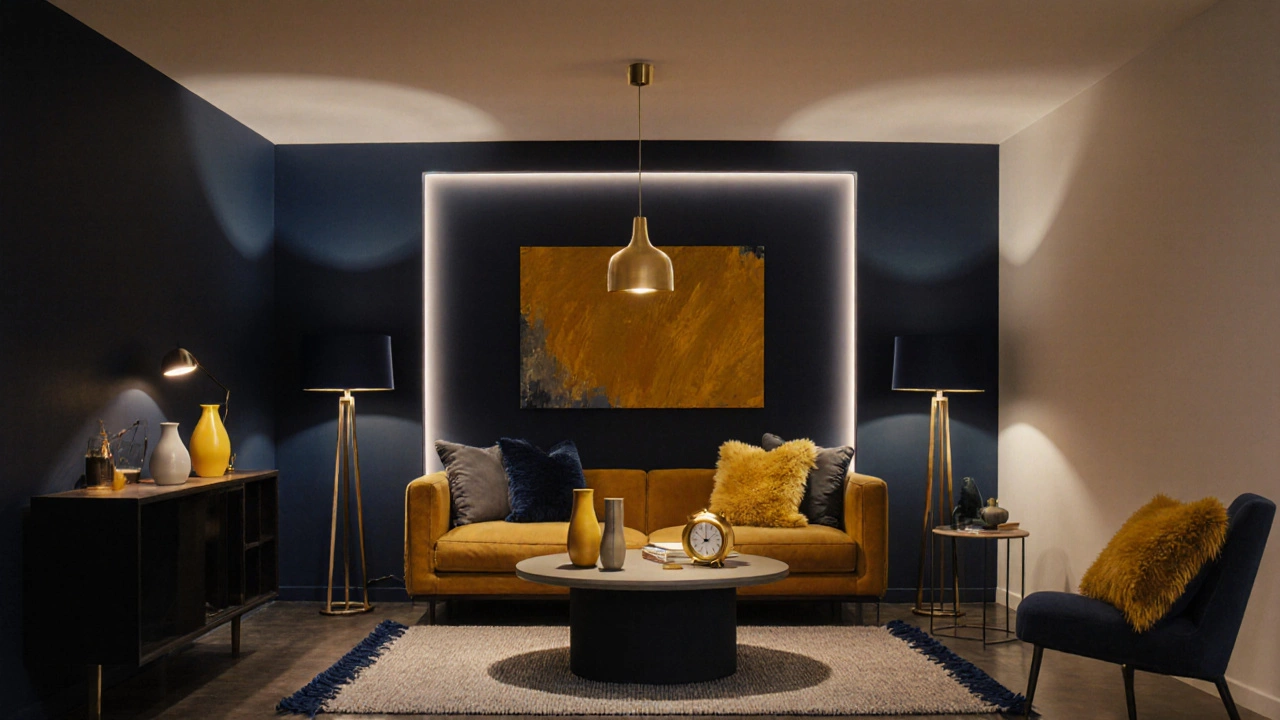
Quick Checklist for a Pro‑Level Living Room
| Element | What to Do | Typical Cost (USD) |
|---|---|---|
| Color palette | Choose neutral base + 2 accent hues (60‑30‑10 rule) | $0‑200 (paint) |
| Furniture layout | Identify focal point, float sofa, keep 3‑ft pathways | $0‑500 (rearrangement) |
| Lighting design | Layer ambient, task, accent; add dimmers | $150‑800 |
| Accent wall | Paint, wallpaper, or wood panel (one wall only) | $100‑600 |
| Area rug | Size under seating, pick pattern from palette | $200‑1200 |
| Window treatments | High‑mount drapes + sheers, match fabric | $100‑400 |
| Crown molding | Soft‑edge profile, paint same as walls or contrast | $50‑250 |
| Accessories | 3‑2‑1 rule, keep scale balanced | $50‑300 |
Following this checklist will give you a systematic way to audit your progress. If any section feels lacking, revisit the corresponding step and tweak until the room feels cohesive.
Common Mistakes and How to Avoid Them
- Over‑matching. Using the same shade for walls, rug, and sofa creates a monotone look. Keep contrast in texture or pattern.
- Ignoring scale. A tiny lamp on a massive sofa looks out of place. Choose pieces that relate proportionally.
- Too many focal points. One major focal (fireplace, TV) plus an accent wall is enough. Additional bold pieces compete for attention.
- Neglecting lighting layers. Relying only on overhead light makes the room feel flat. Add at least two lamp styles.
Putting It All Together: A Sample Walkthrough
Imagine a mid‑century modern sofa in a soft dove gray. Here’s how to apply the steps:
- Palette: Choose dove gray (base), navy blue (secondary), and golden mustard (accent).
- Accent wall: Paint the wall behind the sofa navy, add a large mustard‑colored abstract canvas.
- Rug: Lay a 6×9ft woven wool rug with a subtle dove‑gray pattern and navy fringe.
- Lighting: Install a dimmable recessed ceiling fixture, place a navy floor lamp beside the armchair, and add a small golden pendant over the coffee table.
- Window treatments: Hang floor‑length sheer curtains in ivory, topped with navy blackout panels for evenings.
- Crown molding: Apply a soft‑edge white crown, painted the same as the ceiling to lift the ceiling height.
- Accessories: Stack three mustard‑colored ceramic vases on the console, add a navy throw pillow, and place a small gold‑metal clock on the side table.
The result feels intentional, balanced, and-most importantly-personal. You can replicate this workflow with any style, from modern farmhouse to minimalist Scandinavian.
Next Steps
Grab a notebook, measure your room, and start sketching a basic floor plan. Then follow the seven‑step process above, adjusting colors and textures to match your taste. When you finish, step back and ask yourself: does the space feel like I invited a designer in? If the answer is yes, you’ve nailed professional‑grade living room decor.
Frequently Asked Questions
How do I decide which wall should be the accent wall?
Pick the wall that naturally draws attention-usually the one behind the sofa or the wall with a built‑in feature like a fireplace. It should also be visible from multiple viewpoints.
Can I use wallpaper on an accent wall without overwhelming the room?
Yes, choose a large‑scale, low‑contrast pattern and limit the wallpaper to a single wall. Pair it with solid‑color paint on the others to keep the space balanced.
What’s the best way to measure for an area rug?
Place a piece of paper where the rug will sit, then measure the distance between the front legs of each piece of furniture. The rug should extend at least 12‑18 inches beyond those points on all sides.
Do I need a dimmer for every light fixture?
Ideally, yes. Dimmers let you adjust ambience throughout the day, making the room feel more tailored and saving energy.
How can I make a small living room feel larger?
Use light, monochromatic colors, keep furniture low‑profile, and incorporate reflective surfaces like mirrors. Also, avoid clutter-every piece should have a purpose.
